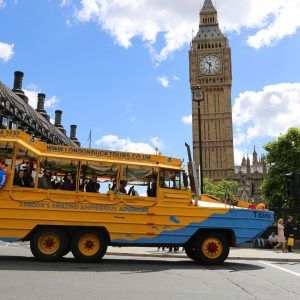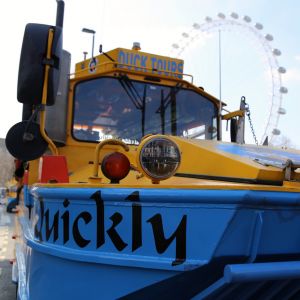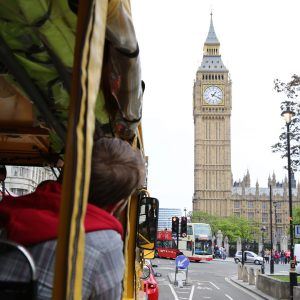This red brick medieval palace is the official home of the Archbishop of Canterbury – the leader of the Church of England, a role that has existed for over 1400 years. Located on the south bank of the River Thames, directly opposite the Houses of Parliament, Lambeth Palace offers some remarkable and often painted views of Westminster.
London Duck Tours recommends a brief wander along the riverside towards Lambeth Palace from our departure point and past the London Eye at sunset, just as the Embankment lights are switched on, as they really do frame the romantic views of the Thames and Westminster perfectly. Who needs Paris?!
Renovation and renewal
The most ancient corners of the palace date back to the 13th century, although like most medieval buildings it’s had its fair share of additions and remodeling. The most significant set of renovations came in the 19th Century when most of the neo Gothic features where added. The historic library at Lambeth Palace dates from 1610, and with its world renowned collection over 200,000 books and 600 medieval manuscripts, it is a national treasure in itself.
A Peaceful Space on the Southbank
The garden at Lambeth Palace is surprisingly large given the building’s central location – the space is without doubt the oldest most continually cultivated space in Central London – dating back to the 1200’s.
Lambeth Palace would have been a place of sanctuary and assistance for the poor and needy of old London. The gatehouse to the front of the palace called Morton’s Tower was the place that the destitute and hungry of London would go to for free soup and bread.
Lambeth Palace and World War II
The palace did not escape World War II without damage, and received a direct hit from a bomb during The Blitz – scorch marks can still be seen on the brickwork. It’s deep and solid crypt came in useful during the same war, when it was used as an air raid shelter, as well as a cellar for storing beer and wine.
Further details of how Central London was affected during The Blitz, and how the war changed the city can be found on our D Day Duck (London Blitz) Tour.



















